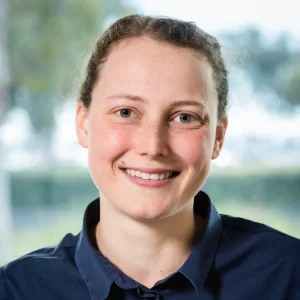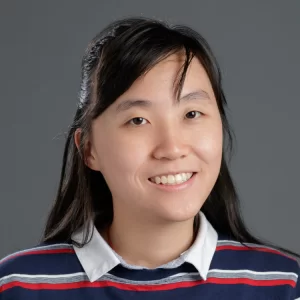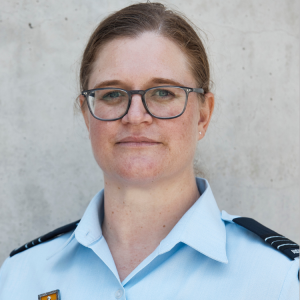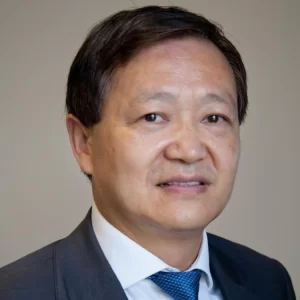From renewable energy innovators to a medtech visionary and the creator of an educational engineering comic series, these engineers have had a significant impact on the profession and society.
It’s that time of year when Engineers Australia rolls out the red carpet to honour the profession’s best and brightest at the 2024 Engineers Australia Excellence Awards.
With the gala dinner, held on Thursday 21 November at Brisbane City Hall, only weeks away, create sat down with some of the finalists to discuss their outstanding contributions to engineering and what their future holds.
Note that these are just some of the finalists in both categories.
Emerging Professional Engineer of the Year
Kate Hammerton
 An accomplished renewable energy engineer, Kate Hammerton has led energy modelling on a number of mini-grid energy options and feasibility studies with Entura.
An accomplished renewable energy engineer, Kate Hammerton has led energy modelling on a number of mini-grid energy options and feasibility studies with Entura.
“The skill, as always, is not running the software, but understanding the limitations of the system components in the real world, as well as the project’s constraints, such as renewable energy targets, budget limitations and reliability requirements,” she said.
“One of the more interesting modelling challenges was looking at interplay between thermal and electrical storage, as well as wind generation, for a site in Antarctica. The thermal storage was a potential solution as part of meeting their heating load requirements.”
Looking forward, one of Hammerton’s key goals as a renewable energy engineer is to keep enjoying the work.
“The area I’m exploring at the moment is mini-grid stability, looking at how technologies of grid forming inverters can work together with other generators to create a high penetration renewable mini-grid that’s stable and reliable,” she said.
It’s not too late to register for the 2024 Engineers Australia Excellence Awards gala dinner.
Cameron Denecker
 As an associate and Chartered engineer at Aurecon, Cameron Denecker has led complex, multi-disciplinary projects, including implementing Aurecon’s modular bridge system – leading to reduced construction risks, costs and maintenance needs.
As an associate and Chartered engineer at Aurecon, Cameron Denecker has led complex, multi-disciplinary projects, including implementing Aurecon’s modular bridge system – leading to reduced construction risks, costs and maintenance needs.
“It started with the problem of needing to install a bridge, which required no maintenance, and an expedited construction timeframe in a regional location where in-situ construction would have compromised elements of quality control,” he said.
“Having the right team, and the right subject matter experts looking at the problem was key, and is always critical in ensuring the best project outcomes.”
Denecker has also actively worked to foster a diverse work environment at Aurecon by broadening the consultancy’s recruitment approach.
“By embracing a wider pool of qualified candidates, we not only enhance our project outcomes but also actively recruit from underrepresented groups, including Indigenous students and graduates from diverse academic backgrounds. This approach not only meets the technical needs of our projects but also promotes equity, innovation and representation within the industry.”
Dr. Hua Qian Vivian Ang
 With more than a decade of experience teaching engineering, RMIT senior lecturer Dr Hua Qian Ang has witnessed firsthand the challenges students face when grappling with complex concepts.
With more than a decade of experience teaching engineering, RMIT senior lecturer Dr Hua Qian Ang has witnessed firsthand the challenges students face when grappling with complex concepts.
Recognising the need for a more engaging approach, Ang created cartoon-style infographics to simplify complex engineering topics while maintaining accuracy.
“Each comic episode is thoughtfully structured into sections that transform complex engineering topics into engaging and memorable narratives,” she said.
“With Australia facing a significant skills shortage, I believe EPIC Engineering Comic can inspire a deeper understanding and passion for the field – not just among current students, but also within the public and the younger generations.”
An avid volunteer, Ang also works with multiple non-profit organisations such as Engineers Australia and Engineers Without Borders – connecting students with these organisations to support humanitarian causes.
“This not only provides students with practical experience but also helps cultivate empathetic engineers who understand their social responsibilities,” she said.
Professional Engineer of the Year
Brock Dominish
 As a mechatronic engineer, Brock Dominish has revolutionised medical devices and manufacturing in Australia. One recent standout is ResMed’s newly released AirTouch N30i sleep mask which combines textile material with silicone moulding, setting a new standard for comfort and performance for people with sleep apnea worldwide.
As a mechatronic engineer, Brock Dominish has revolutionised medical devices and manufacturing in Australia. One recent standout is ResMed’s newly released AirTouch N30i sleep mask which combines textile material with silicone moulding, setting a new standard for comfort and performance for people with sleep apnea worldwide.
“Developing, automating and manufacturing this product in Sydney for a global market is incredibly rewarding, and it’s a prime example of how medtech innovation can have a meaningful impact on people’s lives,” he said.
A driving force behind advanced manufacturing, Dominish believes the integration of robotics is essential for Australia’s competitiveness in global manufacturing.
“Transformation is occurring across the board, from automated goods delivery and component handling to collaborative robots managing dull, dangerous and dirty tasks,” he said.
The societal impact of Dominish’s work serves as a constant motivator to develop increasingly intricate and comfortable products that require cutting-edge mechatronic solutions to bring them to life.
“Meeting customers and their families and hearing how our products have positively affected their lives is incredibly humbling,” he said.
Kate Yaxley
 Kate Yaxley is a high-performing defence professional who is close to completing a PhD on cybersecurity and drones covering both the military and agricultural areas.
Kate Yaxley is a high-performing defence professional who is close to completing a PhD on cybersecurity and drones covering both the military and agricultural areas.
“As part of my research, I proposed a human-autonomy teaming system, which has formed part of both engineering and cybersecurity courses and projects at UNSW Canberra for ADF, Defence-sponsored and civilian students,” she said.
“The use case has been used to support Cyber Table Topping activities for Introduction to Cybersecurity courses, providing students a system for risk assessment and identification of potential mitigations for a future human-autonomy teaming system.”
ABC News also reported on the field trials of her work in the agricultural area, in collaboration with Charles Sturt University, to enhance agricultural practices and farmer and animal safety.
“We identified the importance of drone manoeuvre to the mustering task to support a more predictable response of sheep to the new mustering agent,” Yaxley said.
Chun-Qing Li
 Structural engineering professor Chun-Qing Li has had a distinguished 30-year career, including a five-year tenure as Head of RMIT’s School of Civil, Environmental and Chemical Engineering.
Structural engineering professor Chun-Qing Li has had a distinguished 30-year career, including a five-year tenure as Head of RMIT’s School of Civil, Environmental and Chemical Engineering.
He founded and now directs the Australian Research Council’s Industrial Transformation Training Centre for Whole Life Design of Carbon Neutral Infrastructure, the only one of its kind globally.
Given infrastructure accounts for 70 per cent of total carbon emissions in Australia, this served as a powerful motivator to develop a uniform metric, known as carbon neutrality index, to measure, predict and monitor the carbon neutrality of infrastructure in its whole life.
But making STEM engaging and fun for future engineers is another important quest. Using an iconic structure is guaranteed to do the trick – particularly by making them feel “smart and proud”.
“The word ‘engineer’ comes from the Latin word ‘ingenium’, meaning cleverness,” he said. “Being an engineer means that your ideas can be realised or your dreams can come true; you can resolve the real-world problems that others cannot.”




Why only finalists from certain states highlighted here? For example, no one from WA is here.
Love the drone sheep dog trials. Oh wish I had that a couple of years ago but my old clever ewes would have surely tested the drone though